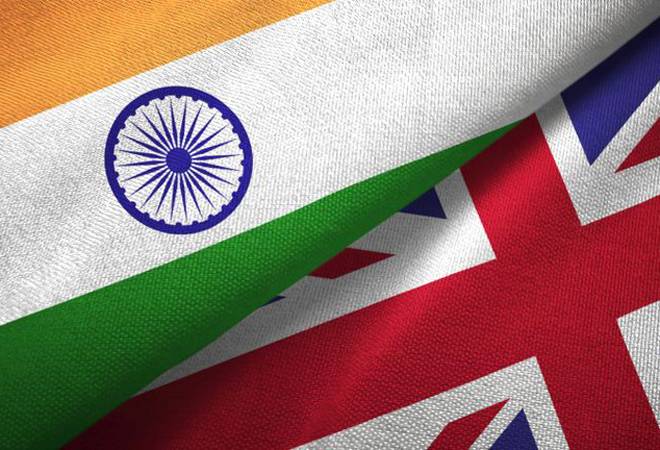Indian soldiers fought for the Britishers during both the World Wars. It is therefore testamentary to the defence relations that both these countries share. Post the independence in 1947, India embarked on its own journey with respect to foreign and national defence policy, keeping the Non-Aligned Movement intent intact. However, India hasn’t been completely detached from the West. On the contrary, there has been a recent set of talks between India and UK formulated virtually in furtherance of a more elevated, elaborate and stable defence and security relationship.
Past Engagements in Defense Sector
Indian law framers and legislators simply prioritised the country’s newly attained freedom and sovereignty above all else. So naturally, India wanted no assistance, involvement or inclusions of any foreigner, specifically the blots of British Raj. Reeling from the colonial horrors and footing the first few imprints of the Indian republic, India intended to steer away and not get caught between the great powers during the cold war. However, it was very soon that India realised that flying on a high horse would not serve them well and foreign assistance coupled with military aid is warranted. The preceding notion was further concretized when UK kept India’s back during the 1962 India-China war and supported its claim to the disputed territories soon after China’s declaration of ceasefire. In addition, two years later to the war, the UK also extended a £4.7 million Special Defense Credit to India for reconstruction of major docks compromised during the war.
Arms Imports and Defense Production
It is no news that the United Kingdom, or exceedingly the whole of Europe, relied on India for its materialistic needs including military goods. Therefore, it was expected that since India had inherited its military establishments and equipment from the UK at the fruition of colonial rule, the UK would still turn towards the peninsula for its future needs. However, the same was not duly practised for a long period of time. From enjoying an extensively bigger share of India’s arms and armouries by 1950s, UK’s share of the pie decreased manifold amounting to just 4.6% in the 2000s.
A big reason for this gradual but steep decline was the friendship offer extended by the Soviet Union (Russia) to sell its defence systems and technology to India at the critical juncture when both US and UK denied their cooperation. Furthermore, Moscow also established itself as a reliable ally to the Union in New Delhi owing to the India-Soviet Treaty of Peace, Friendship and Cooperation in 1971. Though, the relationship with the UK continued to be in regular locus as India imported its aircraft carriers INS Vikrant and INS Viraat etc.
Current Comparison of UK and India Militaria Forces
India stands tall at the 4th rank out of the 140 militaries of the world while the United Kingdom lags and stands at 8th rank. Furthermore, India became the third largest military spender in the world, behind only the US and China. India even accounted for 3.7% of global share. India’s military expenditure was about $72.9 billion owing to the potential threat from China and the venom resting in Pakistan and Afghanistan. However, the UK spent around $59.2 billion in 2020 with respect to its military and defence budget. The reason is because of the drastic differences in manpower of the two countries – India and the United Kingdom and therefore extending to a limited number of soldiers in army, navy, air force and paramilitary forces.
Next Chapter in India-UK defence relationship
As the UK is now expanding and venturing into the Indo-Pacific and India working towards becoming a global security provider in the region, both the countries aspirations, future and goals seem to be intertwined. Therefore, a large area of focus is devised to enhance military-to-military interactions. Although there are numerous training exercises with the US like, Biennial exercise Ajeya Warrior for the Army, Indradhanush exercise for the Air Force, Konkan for the navy, the UK has not matched the complexities yet. The United Kingdom does appear to be extremely aggressive on paper with its foot setting in the Indo-Pacific region, but somehow the on-ground pictures are very different. The United Kingdom has not conducted or undergone more complex tri-service exercises with India, nor have they taken part in trilateral or multilateral exercises with other partner countries. In addition to the strategic and geopolitical calculations, the lack of foundational agreements between the two is also a limiting factor. However, a military logistics agreement and an MoU on joint training exercises is expected to be ratified soon between India and the UK giving reciprocal access to each other’s bases.
The new chapter in India-UK defence relationship would never take the traditional course of a buyer-seller relationship. The two countries now seem to be working with a common intent in furtherance of a common agenda. Therefore, close maritime cooperation and joint approach towards maintaining regional security and stability in the Indo-Pacific seems to be the incidental foundation of an elaborate comprehensive strategic partnership in action.
Written by Hamza Jamal is presently reading law and writes for The Wonk on polity and world affairs.

